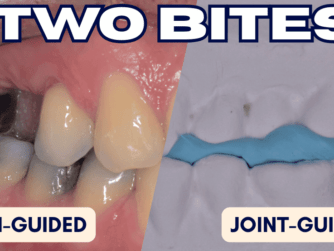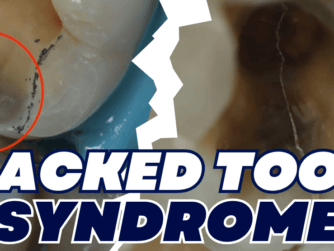Podcast: Play in new window | Download (Duration: 40:00 — 57.7MB)
Subscribe: RSS
In this thought-provoking episode, Dr. Pasquale Venuti represents Tomorrow Tooth aka ‘the other voice of Dentistry’. He is a renowned dentist who is not afraid to express his controversial views. While he may challenge the modern techniques taught in dental schools today, he brings attention to the shortcomings in current practices and encourages critical thinking.
Dr. Jaz and Dr. Pasquale explore various topics that challenge traditional dental practices, including subgingival caries, flat onlays, post crowns, and cement selection. By raising practical and applicable questions, they encourage dentists to question established norms and seek better solutions for their patients.
Protrusive Dental Pearl: New Restoration Needed and the Patient has an existing occlusal appliance. What can you do?
Imagine a Stabilisation Splint – For patients who rely on an occlusal appliance – how do you manage the scenario if they need a restoration? Do you need to make a new occlusal appliance? ? Not really. You just have to gouge out the acrylic where the new restoration was placed (intaglio surface of splint). If the splint fits well, no further adjustments are needed otherwise additional acrylic can be added to provide retention (like a partial reline of the splint over your new restoration. Don’t forget that vaseline!)
Need to Read it? Check out the Full Episode Transcript below!
Highlights of this episode:
02:36 The Protrusive Dental Pearl
05:25 Pasquales introduction
16:53 Subgingival Caries and Gingivectomy
22:10 ‘TableTop Onlays’ – Where is the limit?
28:30 Pasquale on C-Factor
31:12 What are the Limits of Adhesive Dentistry?
36:55 Guideline for Adhesive vs Mechanical
If you enjoyed this episode, check this another episode by Dr. Taylor Paton: Biomimetic Dentistry – What Actually Is It?








[…] If you enjoyed this episode, check the part 1 of this episode: The ‘Anti-Biomimetic Dentist’ – Restorative Lessons from Pasquale Venuti Part 1 […]